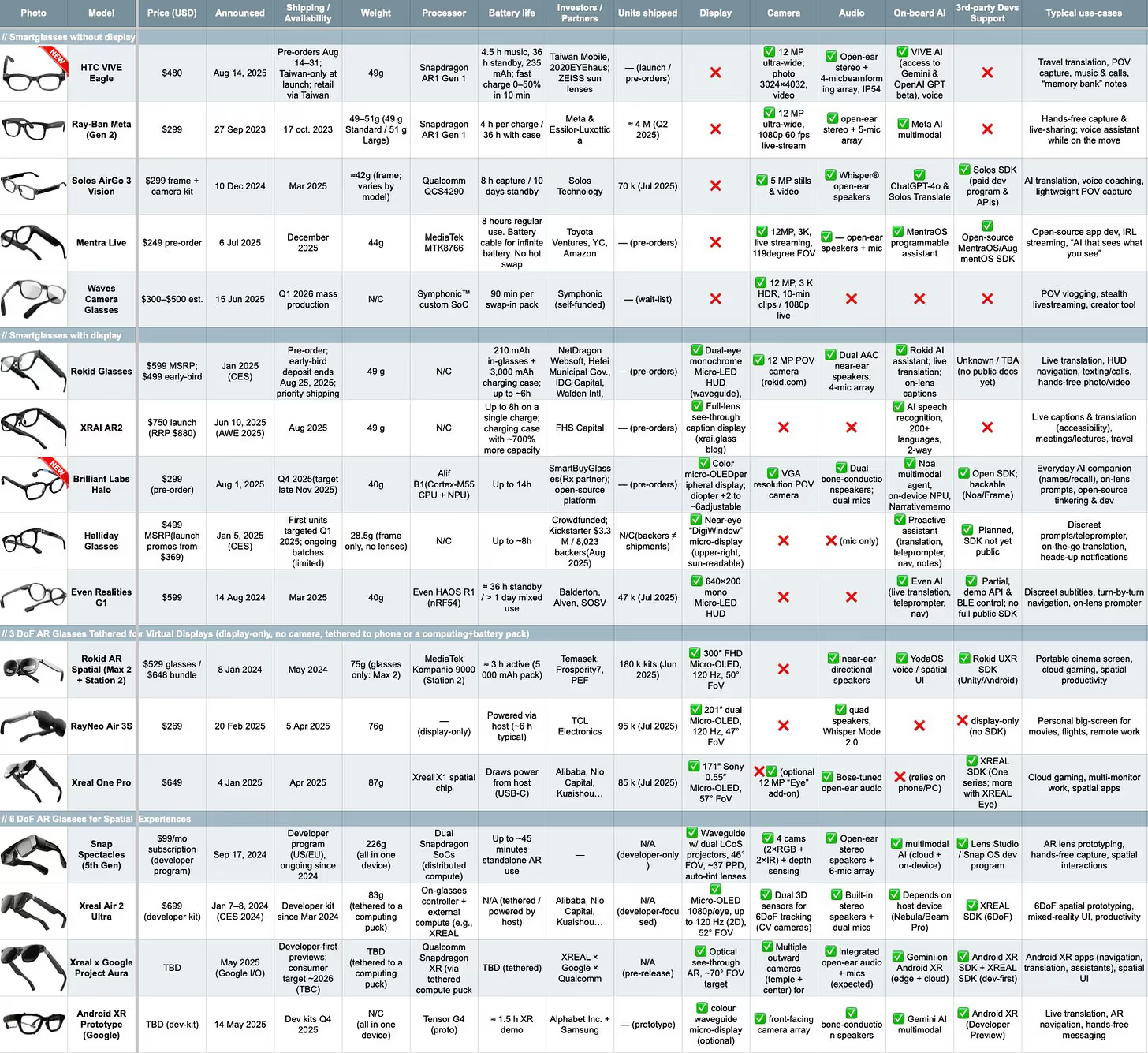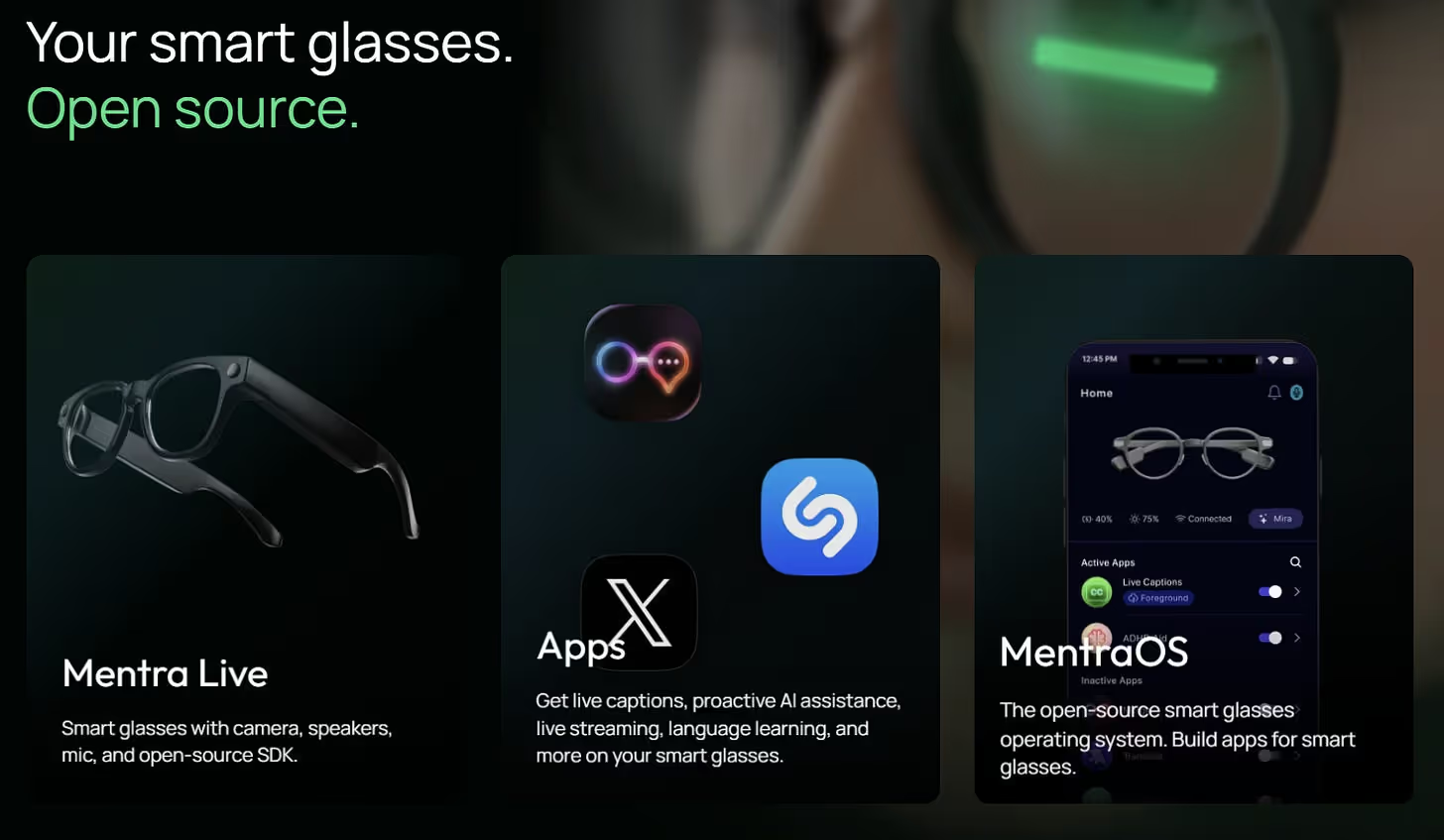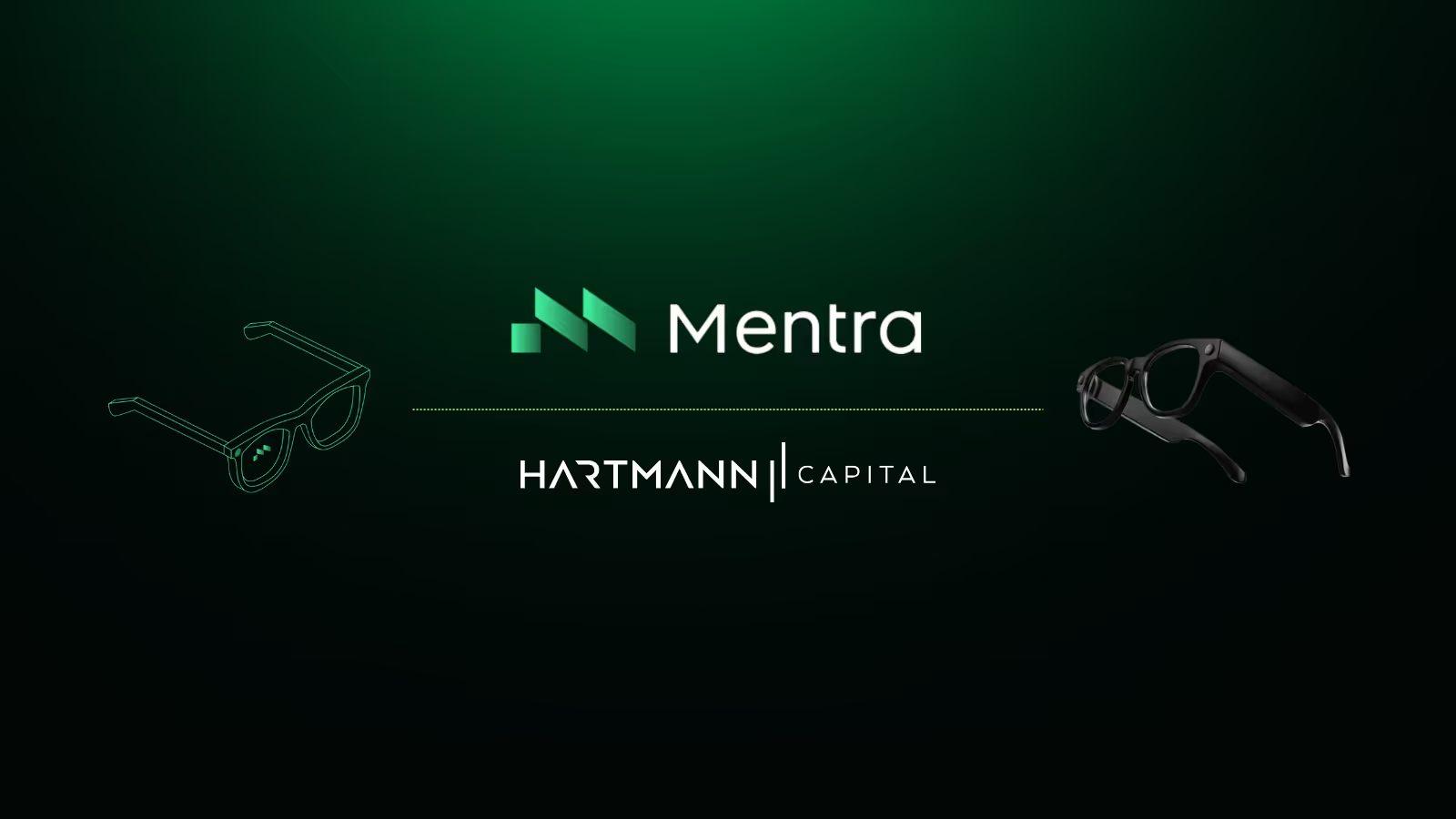Every major leap in computing has been defined by its interface: mainframes had punch cards, PCs had keyboards, smartphones gave us touchscreens.
AI now demands its own.
Typing prompts into a chat box was a start, but it isn’t natural. The real breakthrough comes when AI can see what you see, hear what you hear, speak to you, and show you what you need. Instantly, hands-free, and all day long.
That’s what smart glasses unlock.
Why Smart Glasses, Why Now
For the last decade, smart glasses have been “the technology of the future.” Always close, but not quite ready. The bottlenecks were obvious: clunky displays, heavy frames, poor battery life, and no killer application.
Those hurdles are now breaking.
- Waveguides and microLEDs have made displays clear and compact.
- Weight has dropped below 40 grams.
- Battery life exceeds 16 hours.
- And most importantly, AI is the killer app.
Unlike VR headsets, which immerse us in virtual worlds, smart glasses augment the one we already live in. They are not for escape. They are for enhancement.
For AI to become a true everyday assistant, it needs an interface that is ambient, persistent, and seamlessly woven into human perception. Smart glasses are the first computing platform built for that reality.
The Problem Holding the Market Back
If the hardware is ready, why hasn’t the market taken off?
Because the software layer has been missing.
Every device ships with its own software, limitations, and distribution rules. Developers are shut out or forced to choose between fragmented platforms with shallow app libraries and no guarantee of longevity. The result is no real ecosystem and limited utility for users.
It is the same problem mobile phones faced before Android. In the early 2000s, developers had to pick between Symbian, BlackBerry, Windows Mobile, or Palm, each with its own SDK and distribution rules. No single platform gave them scale. Android solved this by providing an open source core, a unified SDK, and a central app store. That combination let developers build once and reach dozens of devices, which unlocked the mobile boom.

Smart glasses are at the same crossroads today. Rokid, Even Realities, Vuzix, Xreal and others each ship with their own software and fragmented ecosystems. Without a unifying layer, developers face the same dead end that mobile faced pre-Android. Mentra is building the Android moment for smart glasses - and fittingly, Rich Miner, the founder of Android, shares that conviction as one of Mentra’s early backers.
The Solution: MentraOS

MentraOS is the first open, developer-first operating system and app store for smart glasses. It allows developers to write once and deploy everywhere, from Mentra’s own glasses to devices like Even Realities and Vuzix, with more to come.
This removes the fragmentation that has held the category back and gives developers a stable target. MentraOS is open source, licensed under MIT, and ships with real, working apps already in daily use: live captions, translation, proactive AI, and more. Deaf and hard-of-hearing users are logging over eight hours a day.
Mentra is also accelerating adoption with its own reference hardware, Mentra Live. These are camera-first smart glasses that include a microphone, speaker, and full MentraOS SDK for developers. Priced at $249, they give creators and enterprises an open alternative to closed camera-glasses. Shipping is slated for fall 2025, and the current weight is 44 grams.
If Android unlocked the smartphone boom, MentraOS is positioned to do the same for smart glasses.
Why This Team
Cayden Pierce and Alexander Israelov bring a rare combination of grassroots innovation and hard operational experience. Cayden’s track record spans early collaboration with Steve Mann, recognized as the inventor of smart glasses, hands-on prototyping with open-source wearables, and research at MIT Media Lab on proactive, context-aware AI agents designed for real-time augmentation. Like Palmer Luckey, who launched Oculus out of a beat-up trailer, Cayden’s own early chapter was shaped by turning a 40-year-old RV into a roaming hacker lab, criss-crossing North America to build and showcase open-source wearables.

What makes Mentra distinct is not just technical vision but execution capacity. The company operates from San Francisco and Shenzhen, embedding itself directly in the two global capitals of software and hardware. Both founders taught themselves Chinese to work closely with component suppliers and factories, giving them visibility and access that most Western startups lack. This dual presence reduces dependency on third-party contractors, shortens iteration cycles, and improves supply-chain security at a time when other smart glasses teams struggle to move beyond prototypes.
Most competitors are hacker-led, strong on ideas but thin on manufacturing depth and operational reach. Mentra combines that hacker culture with direct hardware integration and global supply-chain positioning. This combination enables them to accelerate hardware distribution, secure scarce components, and build at scale rather than getting stuck in pilot mode. At the same time, the founders believe lasting scale will come from building an open ecosystem and empowering developers, rather than trying to lock down the platform and control every application themselves.
The Round
To further that mission Hartmann Capital invested in Mentra in March, joining its oversubscribed $8 million seed round alongside Paul Graham and Y Combinator, the founders of Android, YouTube, and Pebble, Amazon’s Alexa Fund, Toyota Ventures, and TIRTA Ventures.

Backing Mentra is a bet that open ecosystems will once again outcompete closed ones, just as Android did in the 2000s.
Our Belief
The history of computing is a history of new interfaces. Each generation has shifted how humans interact with technology - from the keyboard, to the touchscreen, to voice.
AI is too powerful to be confined to the moments when we are behind a computer or looking at a phone. Its true potential is unlocked when it can operate in real time, enhancing and interacting with the world as we move through it.
Smart glasses make that possible. They are the form factor that turns AI from a tool we consult into a constant companion embedded in daily life.
Mentra is building the platform to make that shift real - and in doing so, to define the interface of the AI era.
If you’d like to learn more about our work at the frontier of AI and human augmentation, reach out at invest@hartmanncapital.com
Disclaimers:
This is not an offering. This is not financial advice. Always do your own research. This is not a recommendation to invest in any asset or security.
Past performance is not a guarantee of future performance. Investing in digital assets is risky and you have the potential to lose all of your investment.
Our discussion may include predictions, estimates or other information that might be considered forward-looking. While these forward-looking statements represent our current judgment on what the future holds, they are subject to risks and uncertainties that could cause actual results to differ materially. You are cautioned not to place undue reliance on these forward-looking statements, which reflect our opinions only as of the date of this presentation. Please keep in mind that we are not obligating ourselves to revise or publicly release the results of any revision to these forward-looking statements in light of new information or future events.
August 27, 2025
Share


